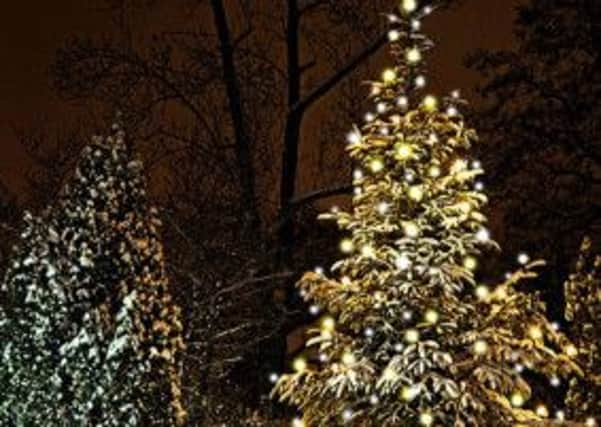Drawn to light in darkest season


Oh, how time passes. This Sunday is the third in Advent, a season of hope when we remember the birth of one destined to be The Light of the World.
In the darkest season of the year, we’re drawn to light in all its forms. A Christmas tree sprinkled with lots of tiny lights seems especially magical. This effect is easily achieved today, yet way before the discovery of electricity people were striving for something similar.
Advertisement
Hide AdAdvertisement
Hide AdTradition says it began with Martin Luther, the theologian whose writings lit the flame of the Protestant Reformation.
One Christmas Eve night, in the early 1500s, Luther was walking home through a snowy wood when a beautiful sight struck him. The stars, glimpsed through the trees, seemed like heavenly fires resting among the branches. Determined to recreate the divine moment for his family, he took home a small fir tree and decorated it with lit tapers.
It’s a lovely tale, even if it didn’t happen, but the story did popularise the modern Christmas tree custom. From the Rhineland in the 1520s the candle-lit tree spread across Europe, reaching North America by the 1840s.
In England our customary decoration was the kissing bush, a frame covered in holly and ivy that hung from the kitchen ceiling. This was “lit” by strips of metal foil and pieces of glass that reflected light. So in Britain the Christmas tree custom spread slowly, mainly among the middle classes: until the end of the 19th century most folk decorated their homes with holly and ivy as their forebears had done for centuries.
Advertisement
Hide AdAdvertisement
Hide AdEven when Victorians could buy glass decorations and tinsel, tiny candles were still essential for the Christmas tree. A family member, equipped with a bucket of water and sponge-tipped cane, was on hand to quell any conflagration.
But soon the problem of the combustible tree would be solved. In the 1880s Edward Johnson, a colleague of Thomas Edison, made a string of 80 small electric lights for his own Christmas tree. Soon the new lights were in production and by 1900, city stores in North America were wowing customers with the wonder of tall fir trees illuminated by electricity.
Celestial lights
While we grumble about our short winter days, in the far north days are even darker and there’s an understandable obsession with light. Saints aren’t celebrated in Lutheran Scandinavia, yet they make an exception for St Lucia’s festival of lights on December 13.
A young woman takes the role of Lucia, robed in white and wearing an evergreen crown studded with candles. In her procession are star-boys, who play trolls chased away by the light. At home the youngest daughter plays Lucia, serving coffee and saffron buns to her family before breakfast.
Advertisement
Hide AdAdvertisement
Hide AdDecember’s night sky usually delivers a show of natural lights – the annual meteor shower known as the Geminids – but the moon will drown all but the brightest when the shower peaks in the early hours of December 14.
However, we do have bright Jupiter, rising before midnight. And just after sunset brilliant Venus appears, very low in the southwest. Look out for the Evening Star on December 23 when it’ll be very close to the young crescent moon.